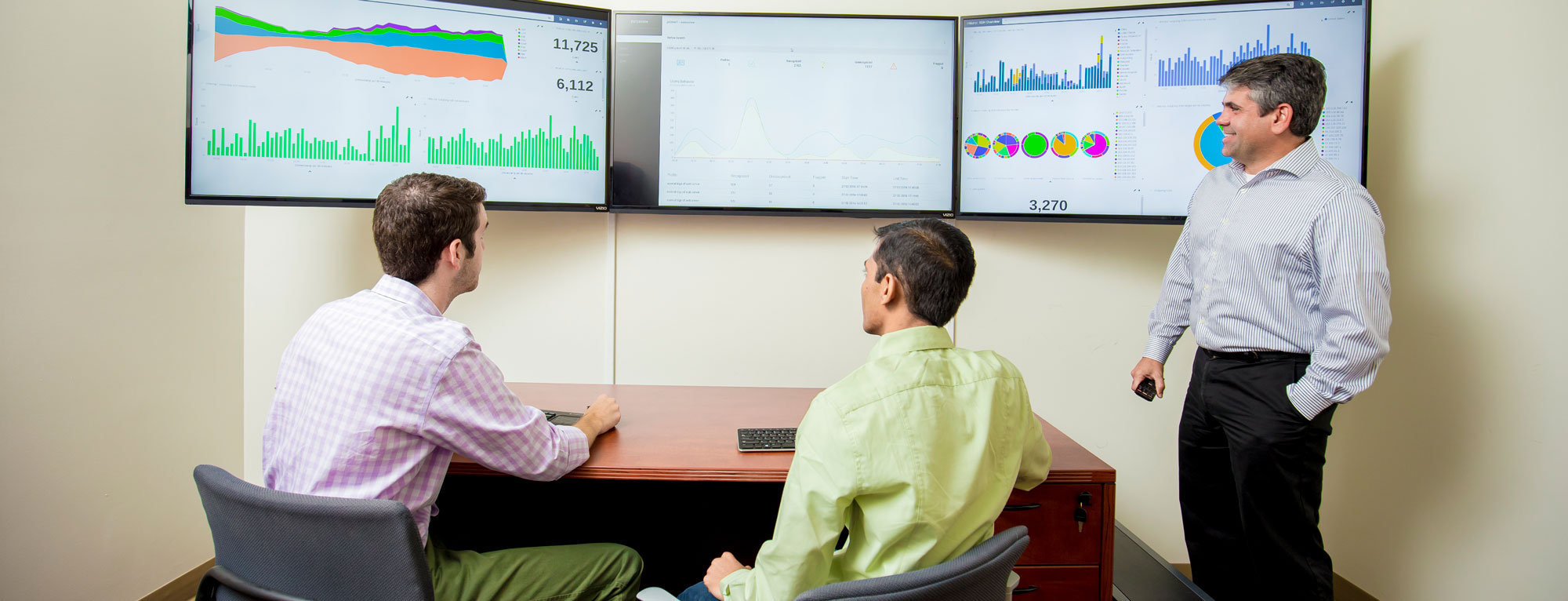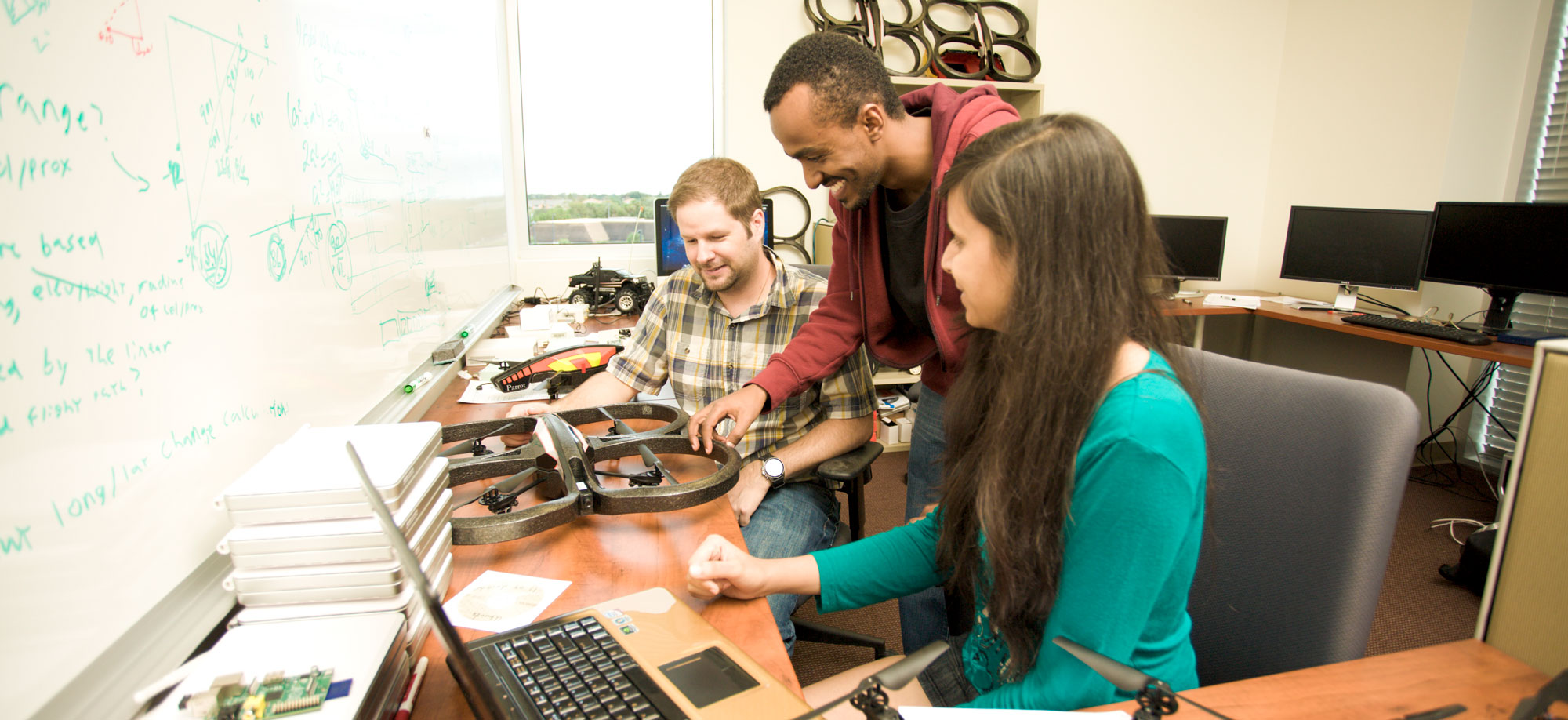
5 Ways CIS Professionals Can Stay Ahead
Embrace the Disrupters | Have a Life-long Learning Mentality | Be Adaptable | Find an Area of Specialization | Pay Attention to Cybersecurity Trends | Your Skill Set is in Demand
Computer Information Systems: An Evolving Field and Career
In human history, there has been no time in which technology has advanced as fast as it is today. Programs and applications that were on the “cutting edge” yesterday will be obsolete tomorrow.
Some of the key progressions in computer information systems (CIS) are advancements in cloud computing, mobile technology and applications, artificial intelligence and machine learning, and Big Data analytics. Each has grown exponentially in just the last few years and are being integrated into both enterprises and the Internet of Things (IoT) to provide better operational capacity and seamless information sharing for businesses, governments and agencies, and those they serve.
As technology evolves, so must the CIS professional. It’s important to continue to learn and keep your skill sets sharp. Here are five ways to do that.
As technology evolves, so must the CIS professional. It’s important to continue to learn and keep your skill sets sharp.

1 Embrace the disrupters
Cloud Computing
The trend toward cloud computing has been one of the biggest disrupters in IT. Businesses of all sizes are increasingly turning to the cloud to host and manage their email and web presence, and increase their productivity.
Cloud computing is most commonly divided into:
- Infrastructure as a Service (IaaS) is the form of cloud computing that provides virtualized computing resources over the internet. A third-party provider hosts hardware, software, servers, storage and other infrastructure components on behalf of its users. IaaS providers also host users’ applications and handle tasks, including system maintenance, backup and security.
- Software as a Service (SaaS) is a software licensing and delivery model in which software is licensed on a subscription basis and is centrally hosted. It is sometimes referred to as “on-demand software” and has become a common delivery model for many business applications, including office and messaging software, payroll processing software, customer relationship and human resources management.
- Platform as a Service (PaaS) is a category of cloud computing services that provides a platform allowing customers to develop, run and manage applications without the complexity of building and maintaining the infrastructure typically associated with developing and launching an app.
Mobile Devices
Mobile technology is enabling both companies and consumers to access information and perform functions almost anywhere, with devices that are best suited for their use. Mobile’s use is outpacing traditional systems and as the computing power in handheld and transportable units increases, so will the systems and applications that operate and enable them, along with the people needed to develop and manage them.
AI
Artificial Intelligence and machine learning, while still in their early stages compared to other sectors of IT, is enabling industries to execute tasks and functions that once took several people and multiple processes to complete. Health care, manufacturing, engineering and even humanitarian services are benefitting from computer systems that can ingest large volumes of data, both manually and autonomously, to understand better ways to treat disease, build machine components, even reach disaster areas via drones that learn their surroundings as they travel.
Big Data
Developing and managing systems that can capture large amounts of corporate and consumer data and translate it into understandable and measurable metrics is just one way that Big Data is changing how organizations operate and interact internally and externally, and are driving business plans and financial decisions. Effective use of Big Data mining can reveal historic trends that can be analyzed to predict and prepare for future occurrences, as well as social analytics which can help in determining a businesses’ new marketing strategies. The IoT will change how future data centers are designed and managed, and how they evolve as the enormous number of connected devices stream data to businesses and organizations, government departments and nonprofit organizations.
What is a bi-modal IT workplace?
As you learn and adapt your knowledge and skills to match today’s demands, you will likely find yourself working in a bi-modal IT workplace. Bi-modal IT addresses the need for both stable and agile IT systems.
The term was coined by IT consultancy Gartner Inc., which defines the two tiers as follows: “Mode 1 is traditional and sequential, emphasizing safety and accuracy. Mode 2 is exploratory and nonlinear, emphasizing agility and speed.” The approach recognizes that an IT organization’s capacity to quickly respond to and drive business goals may require different people, processes, technologies and budgets than does the provision of reliable IT systems.
2. Have a life-long learning mentality
For a successful career in CIS, you will need to be well-educated from the start and open to continuing your education to keep up with the rapid changes in IT as they occur. Developing and improving your in-depth technical expertise in areas such as computer programming, database management, system design, and implementation and maintenance, and earning an advanced degree, like an M.S. CIS, along with experience in a variety of positions and capacities, is your key to growth and advancement.
3. Be adaptable
Businesses are adapting their IT operations to address almost every area of their enterprise, including processes, products and customer services. In this digital age, IT services not only enable business-critical back-office operations, they are also becoming the primary tools many companies use to engage their customers, gathering in-depth information about demographics, traits, habits and tendencies; all critical to improving the business customer interaction.
4. Find an area of specialization
The ability to program and manage information systems is only the tip of the iceberg in today’s IT industry. Your career options have grown to include cybersecurity, enterprise management, mobile computing and application development, network and systems administration, and web-based applications. The industry is calling for individuals with skills that address these specialties and who can perform in the capacities of data, artificial intelligence, IoT and machine-learning architects; cloud services engineers; platform consultants for specialty services; and risk management, information assurance, security analysts and auditors.
According to Comp TIA, approximately 40 percent of the current IT workforce will retire in the next 10 years. This leaves a skills gap that must be filled by the next generation of CIS professionals, including Millennials who are entering computer fields with a lifetime of technology interaction and Generation Z which is being raised in a world that is digitally connected and will be more technology savvy than any other preceding it.
These workers will bring not only their knowledge and passion for all things digital, they’ll also bring their desire to use devices and technology of their preference, setting up unique challenges to provide applications that are dynamic and agile, while also being cost-efficient and most of all, secure. Adding to this picture will be a further melding of employees with contract workers that will increasingly involve the use of artificial intelligence, bots, virtual assistants and other types of knowledge-based systems to accommodate this blended workforce.

5. Pay attention to cybersecurity trends
No system, neither server nor cloud-based, is immune to security risks. As technology advances so do the threats from bad actors, operating independently or through shadow organizations, who will seek to exploit weaknesses in systems to steal sensitive corporate and personal information, and manipulate operational capabilities. As such, cybersecurity is one of the fastest growing segments of the CIS industry. Cybersecurity Ventures reports that cybercrime damages are expected to rise to $6 trillion annually by 2021, representing the greatest transfer of economic wealth in history, risking the incentives for innovation and investment.
TOP CYBERSECURITY THREATS |
|---|
RANSOMWAREAmong the major threats to all systems, ransomware continues to take the top spot. In 2016 IBM reported that email malware embedding ransomware increased by 6,000 percent compared to 2015 and was in almost 40 percent of all spam email. The cost to businesses and consumers was more than one billion dollars! Increasingly, ransomware-as-a-service is becoming an industry unto itself, providing hackers with easy-to obtain programs through the dark web. CIS professionals who can anticipate and counter this threat are in great demand. INTERNET OF THINGS (IoT) ATTACKSWhile the IoT has done much to improve our lives, the devices are vulnerable to attacks that can spread from the primary unit to other devices and even to the systems on which they’re based. Users of mobile devices may unwittingly download apps from unauthorized sites and infect not just their device but an organization’s entire network. Your work in this area will require taking a proactive approach, securing all components of your organization’s digital ecosystem—including data, connected devices, applications, networks and the data center—using innovative technologies and methods that improve how you identify and respond threats. CYBER ESPIONAGECyber espionage was most recently on display during the 2016 U.S. elections. Hackers stole and distributed classified and personal information in an attempt to influence the outcome of the presidential election. This same type of espionage was used to influence several international elections. Cyber espionage can also have far-reaching effects on financial markets, utility grids and transportation infrastructures. The talk of a “cyber war” between nations, which used to be a theme of science fiction, is now a real possibility and must be addressed to avoid potential conflict that may lead to actual war. RANSOMWARE TOP CYBERSECURITY THREATSAmong the major threats to all systems, ransomware continues to take the top spot. In 2016 IBM reported that email malware embedding ransomware increased by 6,000 percent compared to 2015 and was in almost 40 percent of all spam email. The cost to businesses and consumers was more than one billion dollars! Increasingly, ransomware-as-a-service is becoming an industry unto itself, providing hackers with easy-to obtain programs through the dark web. CIS professionals who can anticipate and counter this threat are in great demand. INTERNET OF THINGS (IoT) ATTACKSWhile the IoT has done much to improve our lives, the devices are vulnerable to attacks that can spread from the primary unit to other devices and even to the systems on which they’re based. Users of mobile devices may unwittingly download apps from unauthorized sites and infect not just their device but an organization’s entire network. Your work in this area will require taking a proactive approach, securing all components of your organization’s digital ecosystem—including data, connected devices, applications, networks and the data center—using innovative technologies and methods that improve how you identify and respond threats. CYBER ESPIONAGECyber espionage was most recently on display during the 2016 U.S. elections. Hackers stole and distributed classified and personal information in an attempt to influence the outcome of the presidential election. This same type of espionage was used to influence several international elections. Cyber espionage can also have far-reaching effects on financial markets, utility grids and transportation infrastructures. The talk of a “cyber war” between nations, which used to be a theme of science fiction, is now a real possibility and must be addressed to avoid potential conflict that may lead to actual war. |

Your skill set is in demand. Make yourself stand out.
With technology advancing at an accelerated rate, permeating almost every corner of our daily lives, the need for a well-educated workforce that can understand and manage complex computer information systems is rapidly growing. Your choice to pursue a Master of Science in Computer Information Systems degree will open the door to a variety of rewarding career opportunities.
To remain competitive, businesses and organizations will continue to install sophisticated computer networks and set up more complex systems for communication, data acquisition and analysis, and day-to-day operations. This will require advanced software and systems that are efficient and scalable. And they’ll need people who can understand and use these networks and systems to their fullest capacities, and be able to troubleshoot problems when they occur.
The U.S. Bureau of Labor Statistics (BLS) reports that employment of computer and information technology occupations is projected to grow 12 percent from 2014 to 2024, faster than the average for all occupations. These occupations are expected to add about 488,500 new jobs, from about 3.9 million jobs to about 4.4 million jobs in 2024, due in part to a greater emphasis on cloud computing, the collection and storage of big data, more everyday items becoming connected and the continued demand for mobile computing.
The BLS also reports that the median annual wage for computer and information technology occupations was $82,860 in May 2016, which was higher than the median annual wage for all occupations of $37,040.
The growth is also comparative internationally, as countries and their economic and social infrastructures require similar technologies and the workforce to manage them. Workers with an M.S. CIS who have specialized technical knowledge, along with strong communication and business skills, will have the best prospects.
With an M.S. CIS, there is boundless potential for growth and advancement.


 Give to Florida Tech
Give to Florida Tech